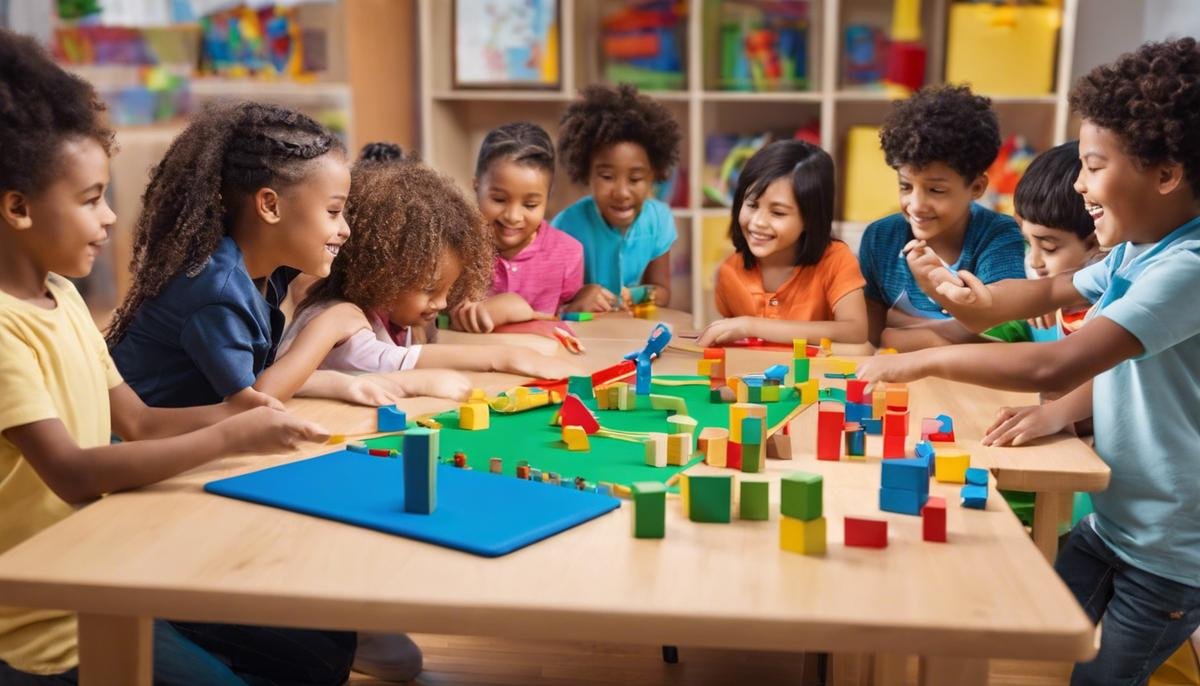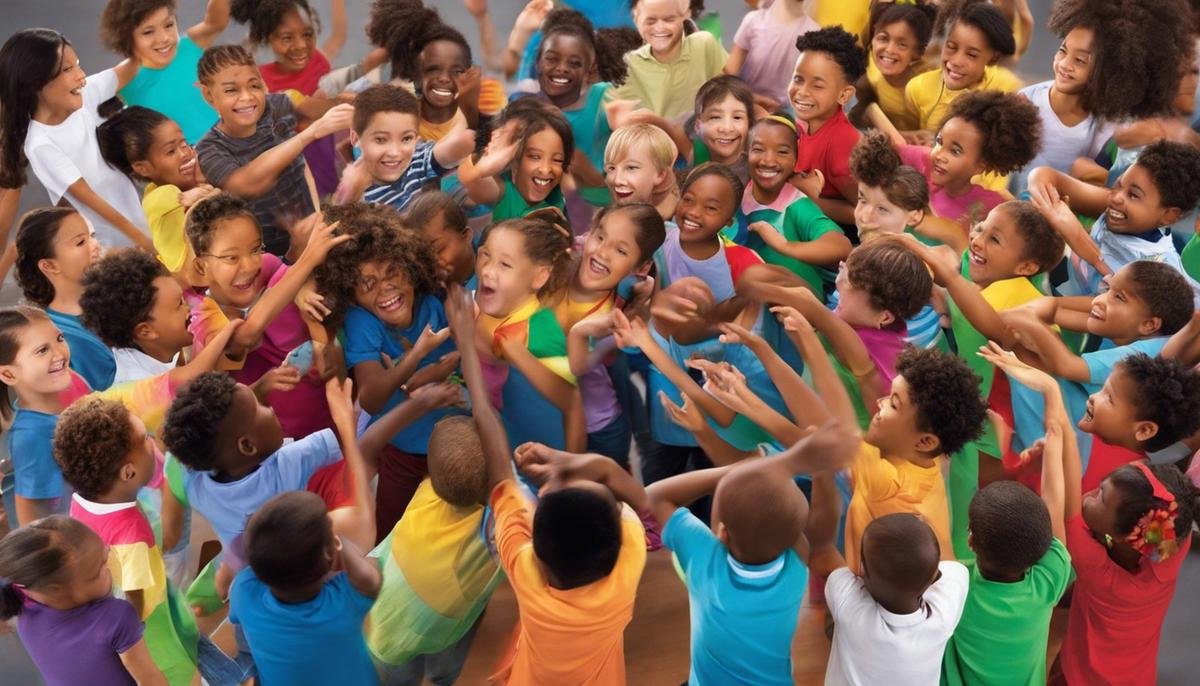
Autism Spectrum Disorder (ASD), better known as autism, is a condition that manifests itself primarily in early childhood, affecting children’s communication skills and behavior. Notably, one aspect often overshadowed is its impact on the development of motor skills – from the basic gross motor skills such as running and jumping to the more intricate fine motor skills such as doing up buttons and using scissors. This essay aims to delve into the world of children diagnosed with autism, focusing specifically on comprehending autism’s effects on their motor abilities, identifying delays, and exploring ways to support their progress.
Understanding Autism
Understanding Autism: Its Impacts on Children’s Development
Hello amazing moms and dads! There’s an important topic that calls for our understanding and compassion – autism. It’s often a misunderstood topic with countless misconceptions. Here’s what autism truly is, and its impact on a child’s development.
Autism, or Autism Spectrum Disorder (ASD), as it’s officially known, is a neurodevelopmental condition. It’s not an illness or disease, but a lifelong condition affecting how someone perceives the world and interacts with others. Interestingly, autism is called a “spectrum disorder” because the degree to which different individuals are affected can considerably vary.
Now, let’s dive into how autism influences a child’s development in distinct areas:
- Social Interaction: Children on the autism spectrum may have challenges with social interactions. They might prefer to play by themselves, struggle with eye contact, or find difficulty in understanding others’ emotions, which may sometimes result in what seems to be inappropriate responses.
- Communication: Language development may also be affected. Some children with autism might speak in an unusual tone, repeat particular phrases, or even refrain from speaking altogether. It’s crucial to remember that difficulties in communication aren’t a reflection of low intelligence. These kids often have unique ways of expressing themselves.
- Behavioral Patterns: Individuals with autism often prefer a specific routine and may have passionate interests in certain topics. Changes in routine can be considerably distressing. They may also exhibit repetitive behaviors like rocking, hand-flapping, or spinning.
- Sensory Sensitivity: Kids on the autism spectrum might experience heightened sensitivity to certain stimuli, like light, sound, touch, taste or smell, leading to what might appear to be overreactions to everyday environments.
Understanding these effects of autism on children’s development does not aim to stereotype or stigmatize, but to raise awareness and foster empathy. It’s essential to remember that each autistic child is unique, just like every other child. They have a blend of strengths and weaknesses, extraordinary talents, and areas of challenge.
Supporting children with autism involves recognizing their individual needs and providing a nurturing and accommodating environment. Interventions like Behavioral Therapy, Occupational Therapy, Speech and Language Therapy, can be hugely beneficial. However, the most crucial aspect remains acceptance, understanding, and boundless love. Our role as parents, caretakers, and friends are to celebrate children for who they are and encourage their growth by being their biggest cheerleaders.
So, let’s keep our hearts open, hold hands, and walk this journey together. Our shared understanding and empathetic response can indeed make a world of difference in the lives of children with autism and their families. Together, we can help create a more inclusive and understanding community that supports and values the uniqueness in each one of us.

Impact of Autism on Motor Skills
The Interplay Between Autism Spectrum Disorder and Motor Skills Development
Autism Spectrum Disorder (ASD) is as multifaceted as a prism, reflecting a spectrum of characteristics, each as unique as the child displaying them. In addition to the social, communication, and behavioral aspects we delved into in the first part of this article, ASD may also influence how a child’s motor skills develop. Now you might be asking: “In what ways can Autism Spectrum Disorder affect a child’s motor skills development?” and that’s exactly what we’re turning our attention to.
Motor skills encompass everything from the grand movements we make when running or jumping, referred to as gross motor skills, to the refined precision of picking up small objects or buttoning a shirt, known as fine motor skills. They’re a vital part of a developing child’s toolkit, and their influence reaches far into various facets of life including self-care, academics, and social interactions.
When it comes to ASD, studies reveal that some children may face motor skills challenges. These may range from an awkward gait to difficulties with handwriting. The complexity of motor skills goes beyond the physical actions themselves; they require coordination between our brain, muscles, and senses, making it a challenging domain for children with ASD.
If you’ve noticed your autistic child struggles to grasp a pencil correctly, they might resist handwriting exercises, using utensils or opening a juice box. These are all tasks involving fine motor skills. Similarly, if balancing on one foot seems to be an impossible task, it could be indicative of a gross motor skill challenge.
But here’s the good news: motor skills can be nurtured and developed with time, patience, and practice. With a combination of at-home exercises and professional therapies such as physical and occupational therapy, the fine and gross motor skills of children with ASD can improve significantly.
For our at-home champions, integrating motor skills development into everyday activities can work wonders. Think playing with building blocks, coloring, or even doing the dishes. All these tasks require a level of coordination and can help develop these vital skills — plus, they’re fun!
Physical therapy can be a game-changer too, fostering strength, balance, and coordination through a variety of exercises and play-based activities. Occupational therapy goes a step further, focusing on tasks that will enable the child to lead an independent and fulfilling life.
Remember, every child learns at their own pace, and progress is progress, no matter how small it may seem. Above all, these beautiful individuals under our care are not defined by their challenges but are people with differing abilities, each blossoming in their own unique time and way.
Journeying with a child on the Autism Spectrum might seem daunting at times but remember that’s okay. As parents, therapists, educators, and friends, all we need is patience, persistence, and a whole lot of love. As a saying goes, “It’s not about how fast you journey, but how far you go.” Yet, isn’t it heartwarming to note that even amidst the challenges, children on the spectrum can indeed, go far.
Knowing more about ASD’s effects on motor skills allows us to better understand our children, but let’s take this knowledge a step further. Let’s be their cheerleaders, their safe haven, and their most passionate advocates. Let’s step into their world, hold their hand, and march forward together because together, we can bridge the gap, shatter the stereotypes, and watch as our unique individuals reach for the stars and beyond!

How to Recognize Motor Skills Delays
Autism Spectrum Disorder (ASD), a neurodevelopmental condition, variably affects children’s development, including their motor skills. It presents an array of challenges in the journey of development, and understanding these hurdles is paramount in supporting the unique needs of these children. Among the areas impacted, a nuanced piece unfolds when we delve into the realm of motor skills. The ability to perform complex tasks involving movement and coordination is essential for a child’s growth, impacting their self-esteem and independence. When ASD meets motor skills development, fascinating yet challenging dynamics come into view that deserve our attention and understanding.
Motor skills primarily break down into two types: fine motor skills, which involve smaller movements using hands, fingers, and wrists, and gross motor skills that require larger movements with arms, legs, feet, or the entire body. In children with ASD, both these areas can face considerable challenges, manifesting in multiple ways that signify a potential motor skills delay.
The symptoms to look out for in fine motor skills delays comprise difficulties with buttoning clothes, writing, or grasping and manipulating small objects. These challenges might seem small, but remember, they pave the way for the child’s ability to perform daily tasks independently. In contrast, a delay or difficulty in gross motor skills can surface through clumsiness, difficulty in running, hopping, or climbing stairs.
Despite these challenges, it’s essential to remember that improvements are always possible with the right strategies and interventions. Physical and Occupational Therapy can bring about significant developments in the motor skills of children with ASD. It may be a roller-coaster ride, with its ups and downs, but progress is achievable with patience and dedication. Therapists skilled in crafting play-based exercises can subtly embed motor skill training in a fun and engaging manner, making therapy sessions fruitful and enjoyable.
But learning doesn’t have to be limited to therapy sessions alone. Integrating motor skills development into everyday activities can yield substantial results. For instance, hand-eye coordination can be improved with simple tasks like ball-catching, while activities like coloring and puzzles can assist with fine motor skills improvement.
The journey towards fostering motor skill development in children with ASD may feel like navigating a labyrinth at times. But patience, persistence, and an abundance of love can illuminate the path. Parents, therapists, educators, friends – each has an irreplaceable role in that journey. The ups and downs one may experience along that road are less daunting when one realizes that the challenge is not to mold the child into an ideal, but to support their unique development trajectory.
Every child with ASD presents a beautiful blend of abilities and challenges. Recognizing, understanding, and embracing these differences not only aids these children in their journey of development, it also enriches our lives, filling it with deeper connection, empathy, and respect for the diversity of human potential. There’s nothing like realizing that every day, every small step forward, becomes a part of the larger journey towards growth. After all, every little progress, no matter how small it may seem, signifies a victory. An achievement that celebrates the uniqueness of the child. An affirmation of the grace, beauty, and potential in the world of Autism Spectrum Disorder.

Supporting Children’s Motor Skill Development
Boosting Motor Skills in Children with Autism: Ways to Offer Support
When it comes to nurturing the development of motor skills in children with Autism Spectrum Disorder (ASD), some caregivers may feel a bit overwhelmed. As we know, children with autism often face challenges in both fine and gross motor skills. But rest assured, every child has the potential to improve and reach their own milestones with the right support.
Firstly, let’s dive into what we mean by fine and gross motor skills. Fine motor skills encompass the smaller movements that use the tiny muscles of the fingers, toes, wrists, lips, and tongue, such as picking up a small object or using a spoon. Gross motor skills involve larger muscle groups and include actions like running, hopping, or jumping. For children with autism, strengthening these skills can lead to enhanced independence and participation in everyday activities.
Just as each child is unique, the way ASD presents itself in each individual will vary vastly. Motor skills development is no exception. One child may exhibit challenges in picking up tiny items (a fine motor skill), while another may struggle with balance and posture (gross motor skills). The complexity and diversity of the challenges mean that a well-rounded approach is essential.
Therapy interventions play a critical role in aiding motor skills growth in children with autism. Physical therapy can offer significant help in improving gross motor skills, enhancing balance, coordination, and overall muscle strength. On the other hand, occupational therapy is beneficial in refining fine motor skills, such as handwriting and dressing independently.
Home exercises and incorporating motor skills building activities into the child’s daily routine can also reinforce the progress made during therapy sessions. Simple activities like coloring, tearing paper, or playing catch can help in strengthening both fine and gross motor skills.
It’s important to remember that every small victory is still a victory. Children with autism may need a little extra time and patience when it comes to motor skills development. It’s crucial to celebrate every milestone, every improvement, no matter how small.
Parents, educators, and friends should continually encourage and advocate for these children’s skill development. Building an environment that bolsters their confidence can do wonders for a child with autism.
It’s also vital to recall that, despite the challenges, children with ASD often surprise us with their unique talents and strengths. They remind us that everyone has something special to contribute to the world.
In conclusion, remember that nurturing motor skill development in children with autism is a journey that requires love, patience, and persistent effort. But with a supportive team by their side, there’s no milestone they can’t reach. Together, we can help these children achieve their full potential. Let’s rejoice in their uniqueness. After all, it’s our differences that make us special.

Embracing the Progress
Motor Skills Development in Children with Autism: Nurturing Progress and Overcoming Setbacks
Addressing challenges and fostering growth are integral parts of parenting a child with Autism Spectrum Disorder (ASD). One area requiring specific attention includes the development of both fine and gross motor skills. The unique nature of ASD often affects these realms of development, demanding customized strategies for progress and adaptation.
Fine motor skills involve coordination between small muscle groups and the eyes, enabling tasks like writing, buttoning shirts, or using utensils. On the other hand, gross motor skills involve large muscle groups, facilitating functions like walking, running, or maintaining balance. In children with ASD, both types of motor skills can present significant challenges. Some might struggle with delicate tasks like buttoning a shirt or grasping a crayon, while others may experience difficulties in larger movements like maintaining balance or coordinating their body while running.
Tackling these difficulties necessitates patience and a focused approach. Therapeutic interventions play a crucial role in managing these obstacles. Physical therapy and occupational therapy are both integral components of a well-rounded treatment plan. Physical therapists can address balance issues, muscle strength, and coordination, while occupational therapists work on functional skills pertaining to daily living tasks.
Incorporating motor skills development into everyday life also presents a natural and effective way to encourage progress. This could be as simple as practicing buttoning while dressing up or working on balance through playful activities like hopscotch or yoga. Remember, inclusive play with other children is vital, as it accelerates motor skills development and fosters social skills.
The role of parents, therapists, and educators in fostering and promoting motor skills developments cannot be overstated. It’s important to remember that progress may be gradual and uneven and setbacks can occur. Learn to embrace the setbacks as a natural aspect of the learning process and remember, each small step forward is a victory worth celebrating.
No two children with ASD are the same; each has a unique set of skills, challenges, and potentials. It’s essential to recognize this and provide support and encouragement tailored to each child’s needs. Enhancing motor skills not only lead to improved physical abilities but also bolsters self-esteem and autonomy.
In conclusion, when it comes to nurturing motor skills in children with ASD, an approach centered on love, patience, and teamwork goes a long way. Above all, remember to celebrate not just the milestones but the daily efforts. Reinforce at every step that they are unique, they are loved, and every achievement – big or small – is significant in its own beautiful way.

Understanding autism and its impacts, particularly on motor skills development, is a stepping stone towards effectively supporting children with ASD in their journey. Remember, the victory lies not in eradicating the challenges but in helping them harness their potential despite them. Always hold onto to the belief that every child is unique and capable in their own ways. Be patient and persistent, and celebrate each hurdle they overcome, regardless of how minor it may seem. Construct a supportive, caring environment for them to grow, learn, and crucially, to be themselves.




